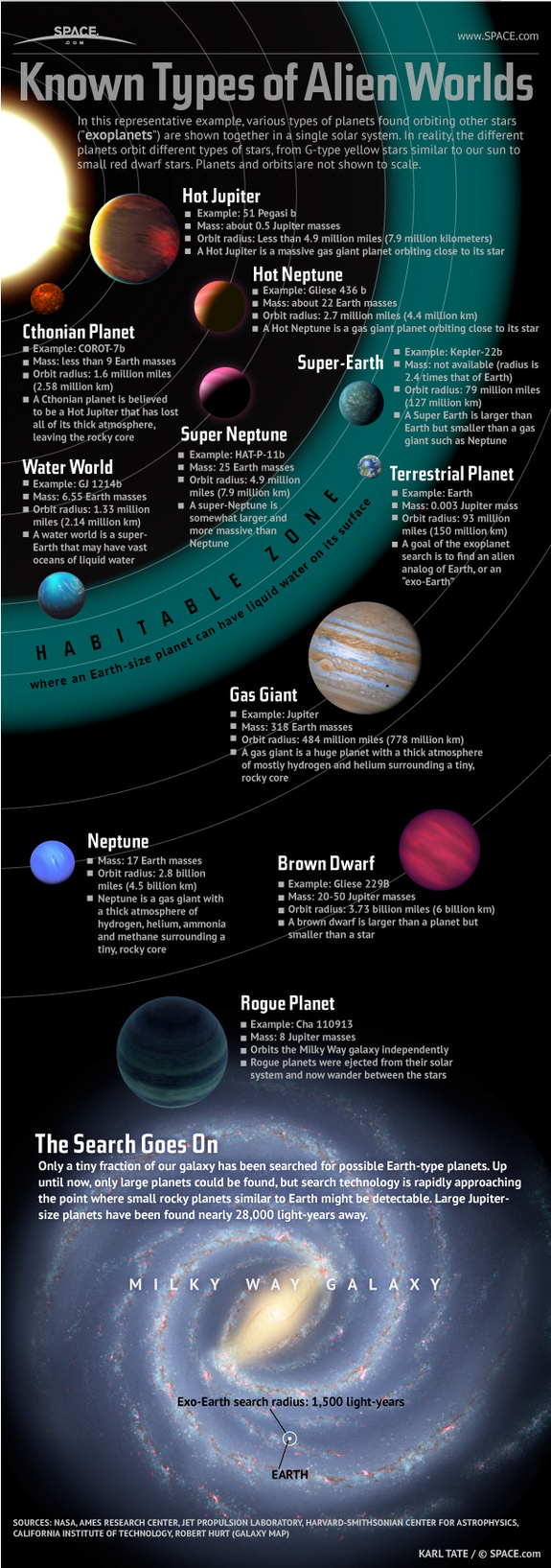Since its announcement earlier this week, Kepler 22b seems
to have captured the imagination of the public more than any other exoplanet
we’ve discovered so far. Personally, I’ve spent a lot of time answering
questions about what it would be like to live on the planet, or if it’s likely
that anyone already lives there. Anything that gets people excited about
science is a good thing, and while we aren’t likely to be flying to Kepler 22b
any time soon, it would be useful to take some time to ask ourselves what this
discovery does mean for us today.
 |
| Artist's impression of Kepler 22b |
Our species feels like it is special. You only have to look at our fiction; we always win in sci-fi alien invasion films, and we are always the good guys teaching aliens what it means to be ‘human’. And even outside of science fiction, our basic belief systems are often based around us being the focal point of the physical universe.
We could (and have) been naïve enough to assume that because our planet lies squarely in the habitable zone of our star, the improbability of this suggests that we and our environment are deliberate and special. Kepler 22b suggests that this is simply not the case. The Kepler mission studies a relatively small fraction of the sky, covering an unimaginably small portion of our galaxy. Of course, our galaxy is only one of billions in the cosmos. So the fact that we have found even one such planet should lead us to question our view of our solar system being ‘special’. And it isn’t just one.

Source: SPACE.com: All about our solar system, outer space and exploration
We have discovered over 700 exoplanets so far, with the list of hundreds of other potential candidates growing each month. Of these, at least a few dozen sit in their habitable zones, and of these we know that many are earth-sized. And even if they aren’t, they could easily hold moons that are habitable. Given the fact that all this has come from one mission looking at a small piece of sky, we can safely say we are not special.
Add that to the fact that Kepler only uses one method of the
several we have for detecting exoplanets and, well, you get the picture. The
universe is likely teeming with planets, a good number of which could (and
probably do) harbour life. But what can we realistically expect to find out
about life on Kepler 22b?
 |
| Kepler Space Telescope (Credit: BBC) |
So it is reasonable to assume that we have the technology to
analyse the chemical makeup of an alien atmosphere. Ask yourself- “what if we
detected signs of artificial pollution?” That would certainly infer the
presence of intelligent, technologically developed life. The only catch is that
Kepler 22b is 600 light-years away, so anything we detected would have existed
600 years in the past. Does that mean we could never communicate with the
inhabitants?
 |
| Radio Telescopes could be used to 'scan' the planet. |
Could we fly there and make first contact? Not with current
technology. The fastest spacecraft we have ever produced would still take
nearly 19 million years to cover 600 light-years. Even if we harness nuclear
power to reach a significant percentage of light-speed, we would still have the
problem of time-dilation. Back on Earth, one round-trip would take over 1,200
years, yet only a matter of days or months for the astronauts.
So to the real world Kepler 22b means very little, yet at the same quite a lot. In practical terms, we won’t be packing our bags any time soon to move there, or be preparing emails to send to our new alien friends. However, we do well to question our world-view, because this finally proves that planet Earth is not so rare, and thus not so special.

Amazing! Great article!
ReplyDeleteLETS JOIN AND FEEL SENSATION TO PLAY SABUNG AYAM
ReplyDeleteVISIT OUR SITE AT
http://www.ayamgoreng.net
ONLY HERE YOU CAN FEEL CONTINUOUS VICTORY
http://gorengayammarketing.blogspot.com/2018/08/manfaat-memberi-lidah-buaya-pada-sabung.html
========================================================
INFO SEPUTAR SABUNG AYAM
SABUNG AYAM
SABUNG AYAM ONLINE
SABUNG AYAM BANGKOK
SABUNG AYAM FILIPINA